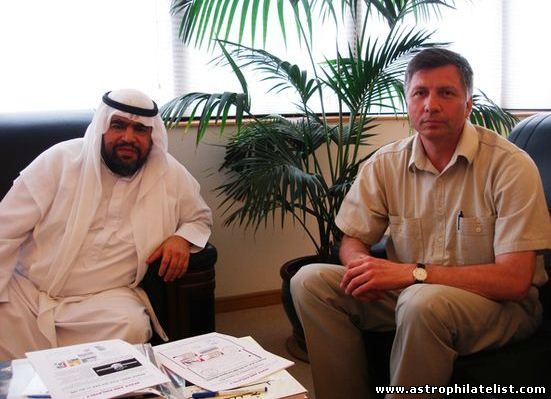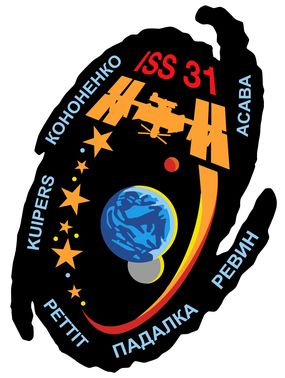Main » Entries archive
 Private Dragon spacecraft links up with space station. Private Dragon spacecraft links up with space station.
On May 25, 2012 at 16:02 UTC the first private U.S. unmanned supply spacecraft, the Dragon, was successfully docked to the International Space Station.
The linkup operation was carried out by astronauts Donald Pettit (USA) and Andre Kuipers (the Netherlands) with the help of the giant 17-meter Canadarm that had earlier (at 13:56 UTC) grabbed the Dragon capsule.
The Dragon is a reusable spacecraft developed by SpaceX company to fly cargo to the ISS after NASA retired its space shuttle fleet last year.
Space Exploration Technologies Corporation, or SpaceX, is a space transport company headquartered in Hawthorne, California. It was founded in 2002 by former PayPal entrepreneur Elon Musk. In the future the firm also hopes to carry U.S
...
Read more »
|
 First private spacecraft was launched to ISS. First private spacecraft was launched to ISS.
On May 22, 2012 at 07:44 UTC the Dragon COTS 2 DEMO unmanned spacecraft was launched from launch pad 40 at Cape Canaveral, Florida, USA. The first private spacecraft was orbited by the "Falcon-9” rocket-carrier.
If all goes according to plan, the Dragon will become the first commercial space vehicle to reach the International Space station, a 450-ton orbiting complex staffed by six crew members from Russia, the United States and the Netherlands.
The Dragon is to dock with the ISS on May 25 at 12:06 UTC. |
 Meeting in Dubai. Meeting in Dubai.
On May 17, 2012 an informal meeting of Mr. Abdulla Mohammed Tayyeb Khoory, President of the Emirates Philatelic Association (EPA) as well as Secretary General of FIAP Executive Committee and Mr. Igor Rodin, Chairman of the FIP Section for Astrophilately took place in Dubai, United Arab Emirates.

Mr. Abdulla Khoory told Igor Rodin about the upcoming activities of the Emirates Philatelic Association. In its turn Igor Rodin informed Mr. Abdulla Khoory about the work of the Section to promote Astrophilately.
Looking through: 2141 |
Date: 18.05.2012
| Rating: 0.0/0
|
 Russia launched a Canadian satellite. Russia launched a Canadian satellite.
On May 17, 2012 at 19:12 UTC the Russian "Proton-M” rocket-carrier equipped with the "Briz-M” booster (upper stage) was launched from Baykonur Cosmodrome. The rocket orbited the "Nimiq-6” Canadian communications satellite. The Nimiq 6 is a direct broadcast satellite built by Space System/Loral, a leading satellite developer.
Looking through: 1718 |
Date: 18.05.2012
| Rating: 0.0/0
|
 Japan launched 4 satellites. Japan launched 4 satellites.
On May 17, 2012 at 16:39 UTC the H-2A rocket-carrier was launched from Tanegashima Space Center, an island spaceport in southern Japan. The rocket orbited 4 satellites.
The "Kompsat 3”, a high-resolution imaging satellite was built in South Korea. The craft's sharp camera was provided by Astrium of Germany.
The satellite for JAXA's first Global Change Observation Mission, officially known GCOM W1, will measure moisture in Earth's atmosphere, soil and trapped in polar ice caps. The nickname of GCOM W1 is Shizuku, which is Japanese for water drop.
The H-2A rocket also orbited a small demonstration satellite named SDS 4 for the Japanese space agency and Horyu-2, a student-built experimental satellite.
Looking through: 1590 |
Date: 18.05.2012
| Rating: 0.0/0
|
 Russia launched a military satellite. Russia launched a military satellite.
On May 17, 2012 at 14:05 UTC the Russian "Soyuz-U” rocket-carrier was launched from Plesetsk Cosmodrome in northern Russia. The rocket orbited the "Kosmos-2480” clandestine photo surveillance satellite designed to collect intelligence on strategic sites around the world for defense purposes.
Looking through: 1606 |
Date: 18.05.2012
| Rating: 5.0/1
|
 Russian Soyuz TMA-04M spacecraft docked to the ISS. Russian Soyuz TMA-04M spacecraft docked to the ISS.
On May 17, 2012 at 04:35 UTC the "Soyuz TMA-04M” spacecraft docked with the Russian "Poisk” (MIM-2) module of the International Space Station. The Soyuz TMA-04M delivered three new members of Expedition 31 to the ISS, Russian cosmonauts Gennadiy Padalka and Sergey Revin as well as American astronaut Joseph Acaba.

The hatches between the spacecraft ant the station was opened at 07:16 UTC. The new comers joined current ISS expedition members, Russian cosmonaut Oleg Kononenko, American astronaut Donald Pettit and European Space Agency astronaut Andre Kuipers (the Netherlands) to form Expedition 31 crew of 6 members. Kononenko, Pettit and Kuipers have been aboard the station for almost five months since arriving in December 2011.
...
Read more »
|
 Arian rocket orbited 2 satellites. Arian rocket orbited 2 satellites.
On May 15, 2012 at 22:13 UTC the "Arian-5” rocket-carrier was launched from Guiana Space Center at the European Spaceport in Kourou, French Guiana. The rocket orbited 2 satellites built in the United States by Lockheed Martin for telecommunications operators in Japan and Vietnam.
The JCSAT 13 direct-to-home television broadcasting satellite will serve Japan's SKY Perfect JSAT Corporation. It has a 15-year life expectancy.
The VINASAT 2 satellite will be used by Vietnam Posts and Telecommunications Group to relay TV, phone and radio signals. The satellite weighs approximately 3 tons and has a lifespan of 15 years.
Looking through: 1624 |
Date: 18.05.2012
| Rating: 0.0/0
|
 Russia launched Soyuz TMA-4M manned spacecraft. Russia launched Soyuz TMA-4M manned spacecraft.
On May 15, 2012 at 03:01 UTC the Russian"Soyuz TMA-04M” spacecraft was launched from Baykonur Cosmodrome. The space vehicle was orbited by the Russian "Soyuz-FG” rocket-carrier.
The spacecraft is piloted by 3 cosmonauts: Commander, Russian cosmonaut Gennadiy Padalka (center); flight-engineer, Russian cosmonaut Sergey Revin (left); flight-engineer, American astronaut Joseph Acaba (right).
Photo by the Gagarin Cosmonaut Training Centre.
The space vehicle is to dock with the Internat
...
Read more »
|
 China launched a new remote-sensing satellite. China launched a new remote-sensing satellite.
On May 10, 2012 at 07:06 UTC the "Chang Zheng-4B” (Long March-4B) rocket-carrier was launched from Taiyuan Satellite Launch Center in the northern province of Shanxi, China. The rocket orbited the "Yaogan-14” remote-sensing satellite and the "Tiantuo-1” satellite.
The "Yaogan-14” satellite will be used to conduct scientific experiments, carry out surveys on land resources, monitor crop yields and help with natural disaster-reduction and prevention.
The "Tiantuo-1” satellite, weighing only 9.3 kg, will be used for data reception for the satellite-based vessel Automatic Identification System, optical imaging and various space exploration experiments in orbit.
Looking through: 2082 |
Date: 12.05.2012
| Rating: 0.0/0
|
|





